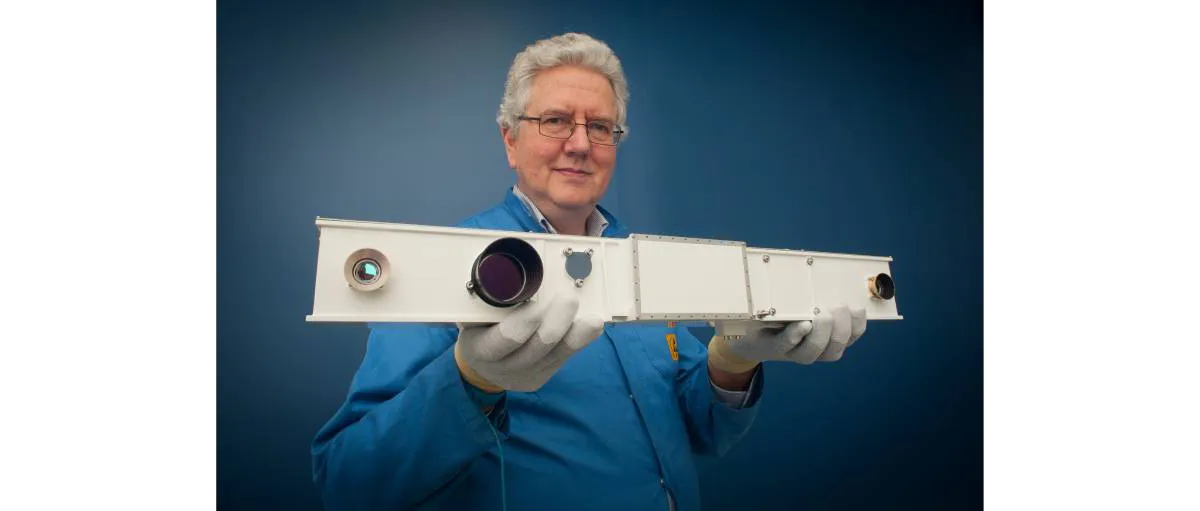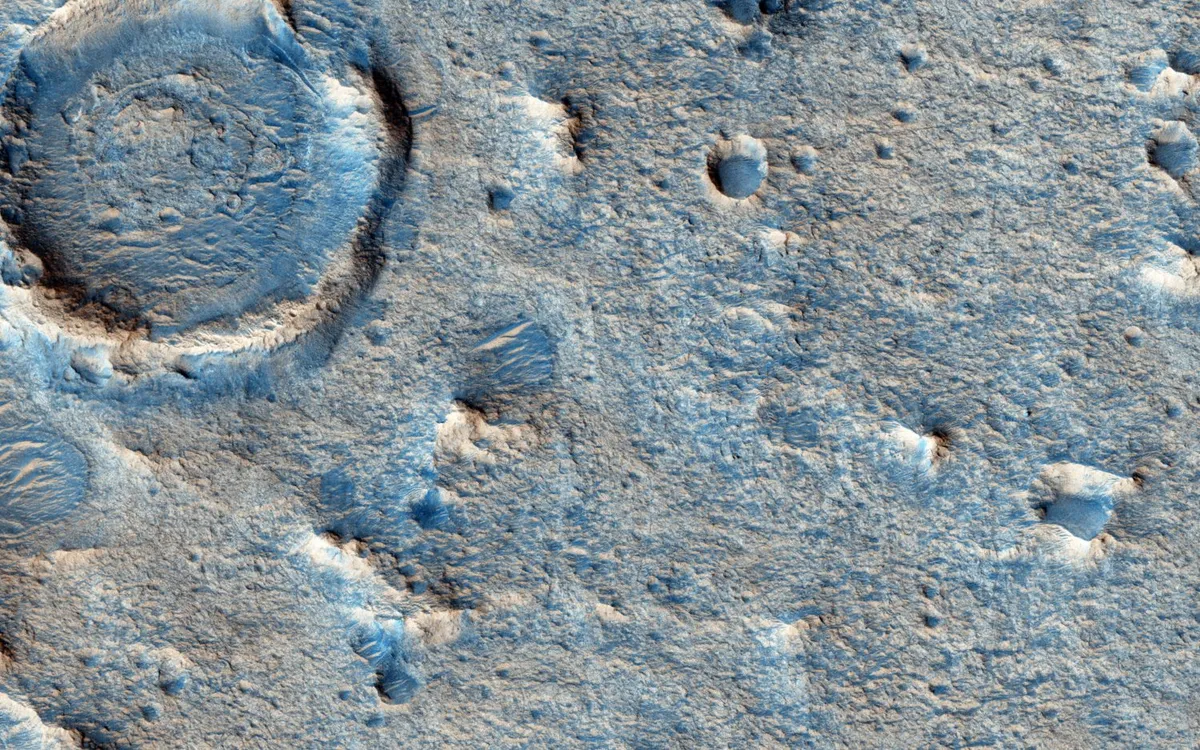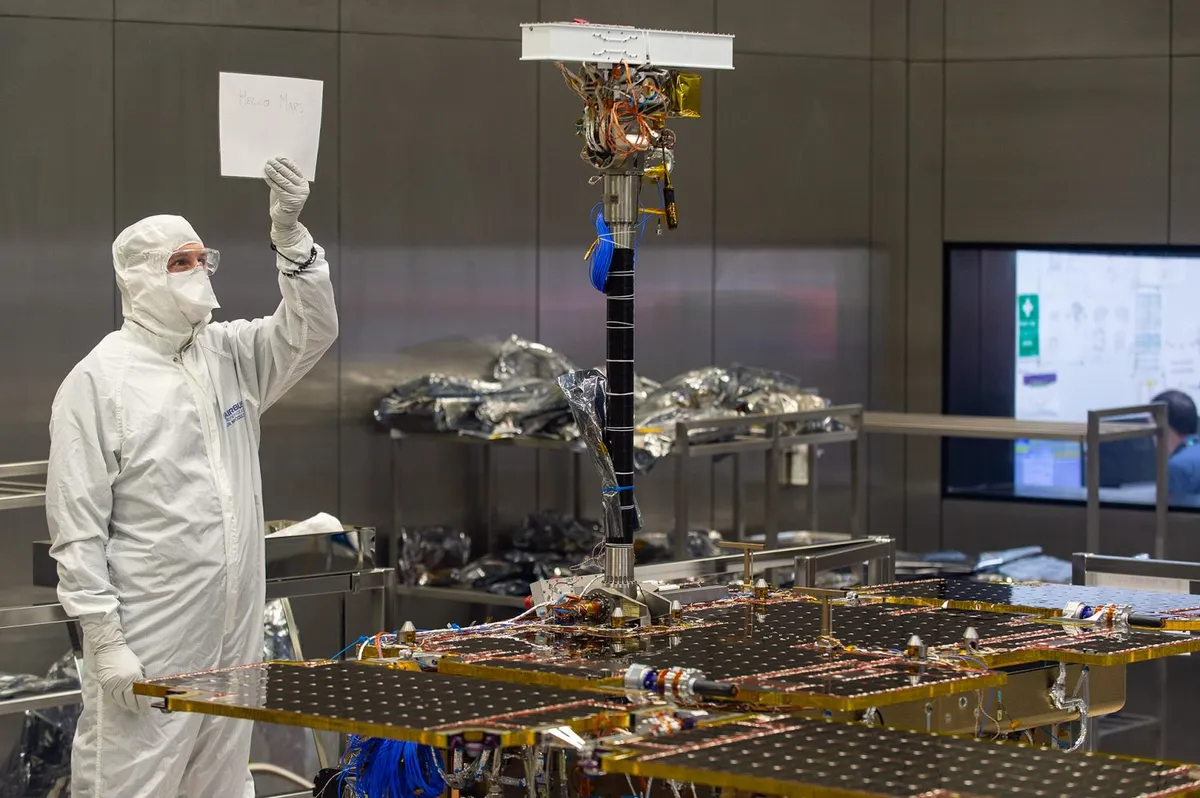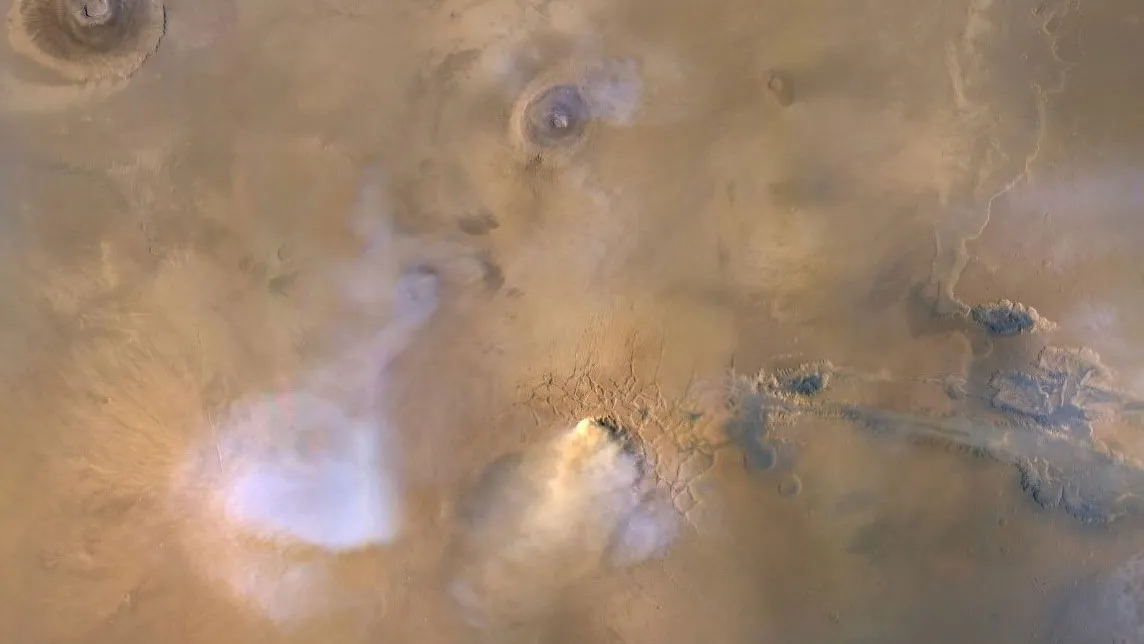Are we are alone on planet Earth, or does life exist elsewhere in the Universe? The ExoMars 2022 rover - named the Rosalind Franklin rover - is one of many missions poised to find answers to this ancient question when it launches on its journey to the Red Planet.
The rover is named Rosalind Franklin after the early 20th century scientist who carried out groundbreaking work into the structure of DNA.
It will touch down on the Martian surface and begin looking for signs of ancient life, drilling down and analysing subterranean samples before sending the data back to Earth, much like NASA's new Perseverance rover.
The mission is a partnership between the European Space Agency and the Russian space agency Roscosmos, and one of its key instruments is the PanCam, a high-tech camera led by the UK that will observe and analyse the Martian terrain.
We spoke to Professor Andrew Coates from UCL's Dept. of Space and Physics at Mullard Space Science Laboratory, who is Principal Investigator of the ExoMars PanCam instrument, to find out more about the mission and how this UK-led instrument could be key to solving one of the biggest mysteries of our time.

Where will the Rosalind Franklin Rover be situated on Mars?
The rover is going to be landing in a really interesting area of Mars called Oxia Planum, and at that location there are signs of water having played a role in the planet's distant past.
About 3.8 billion years or so ago, when Mars had lots of water on its surface,Oxia Planum is one of the places that was covered with water, and there are also signs of an outflowing river channel there.
It's a really interesting place to go to look for signs of life on Mars.
During this mission we're going to be drilling underneath the surface of Mars up to 2 metres, for the first time.
Previous missions have been able to drill, but only about 5cm or so underneath the surface. We're going to go much further, so we need to be drilling at the right the place.
We need to find a place where there's water, the right sort of chemistry, the right sort of rocks on the surface, the right sort of terrain.
We'll be drilling below the surface to get samples to look for signs of life, and that's the really new and exciting thing about this mission.
Why will the ExoMars rover drill into Mars?
The surface of Mars is extremely hostile for life because it's got a very strong, high radiation environment.
It's also got an extremely high ultraviolet content, so it's like standing under a hole in the ozone layer the entire time.
There's radiation coming from the Sun and from space, and this is interacting with a very thin atmosphere on Mars, which it finds relatively easy to get through.
Drilling underneath the surface means we can get underneath all of that. The first millimetre or so gets us underneath the ultraviolet and the first metre gets us underneath the oxidants, which are on the surface environment.
Under about 1.5 metres, that gets us below the radiation environment, so we intend to get pristine samples that far down, collect them and deliver them to the rover, analyse them on the rover and send the results back to Earth.
We're looking for signs of life having existed maybe 3.8 - 4 billion years ago, or potentially existing even now, if it could have survived.
We don't know of life anywhere else in the Universe, and this mission could potentially tell us of life elsewhere. It's just so exciting.
The time period 3.8 - 4 billion years ago is important because at that time Mars and Earth were very similar, and life was developing on Earth.
There are signs of water having existed on Mars at that time, such as in the Oxia Planum location, but there was also the right chemistry going on, there was a source heat, and it probably had the same amount of time that it took for life to develop on Earth.
All the conditions you need for life were potentially satisfied on Mars at that time.
It may seem a long time ago, and of course it is a long time in the Solar System's history, because the Solar System formed 4.6 billion years ago, but that's the time that we're looking for life to have potentially emerged on Mars.
At the moment, of course, we only know of life on Earth. Mars is one of the great targets to look at, as well as Jupiter's moon Europa for example, and Saturn's moon Enceladus in which you've got the right conditions for life even now.
But Mars is closer and easier to get to, so with our rover we're looking to get to the surface and drill down to look for signs of life. That's the really exciting thing about the mission.

What signs of life that will ExoMars 2022 be looking for?
Very simple life. We are looking for bio-markers. Amino acids, molecules with the right chirality, so left-handed and right-handed molecules, one of which is used in the development of life.
And we can actually look at that with the Mars Organic Molecule Analyzer, which is one of the instruments on board the rover.
With that payload we can actually get to the heart of the question "could there have been, or could there be life on Mars?"
If Mars and Earth were similar 4 billion years ago, why are they so different today?
At the end of the Late Heavy Bombardment period of the Solar System, when lots of stuff was flying around and colliding, Mars was one of the bodies that was hit by a big object. That may have played a role in causing the extreme differences between the two planets.
But also, Mars cooled off more quickly after its formation than Earth did. Mars is smaller, and so it lost heat more quickly, which probably caused the planet's magnetic dynamo to freeze.
This might have been aided by the impact that may have occurred about 3.8 billion years ago.
Once the planet loses its magnetic field, it starts losing its atmosphere because it's no longer protected.
Earth, for example, has a magnetic field that protects us from the solar wind and from cosmic radiation. Mars lost that early in its history and so ever since then, over billions of years Mars has been losing its atmosphere.
If the conditions were right for life on Mars at one time, that probably didn't continue, because there are signs of the water having disappeared from the surface over time, so older Mars no longer had the right conditions.
This is why we think it's most unlikely there would be life there now, but we will be looking for it.
That early period is really the key time we should be examining to understand whether Mars could have ever had life.
It's such an important question. Was there life or is there life anywhere other than Earth?
It does seem odd that we are completely alone in the Universe, but at the moment we only know of life on Earth, so this is one of the key things to be doing, looking for signs of life.
That's why this mission is so important.

What is the PanCam instrument?
PanCam is a UK-led instrument. We've led this instrument from UCL's Mullard Space Science Lab, and we will continue to do that during the operation of the mission.
We have a big team in the UK working on it, from UCL and also from other universities. The team also includes Germany, Switzerland and Austria, so it's a big international team, but it's led from the UK.
It's a really exciting instrument and it's one of the 'contact instruments' that are used to decide where to drill, and images are very important within that.
There's also an infrared spectrometer, a close-up imager and various other instruments that allow us to pick out the right places to drill.
There's even a little camera inside the drill tip, which will show us the geology underneath the surface.
And then there are the instruments that will be analysing the samples that are collected.
The PanCam will be mounted on the rover 2 metres above the surface and on each side there's a wide-angled camera, which gives us stereo view of the surface of Mars.
Each camera has an 11-position filter wheel, which gives us colours of light so we can determine the composition of objects we observe.We can also tell the composition of the atmosphere and look at dust and water there.
The big engineering challenge is coping with the thermal environment but also the radiation environment, which is more severe than on Earth.
We will be using the camera to watch the Sun set on Mars, and using the filters we'll be able to tell the amount of water present between the Sun and the rover.
In addition to the two wide-angled cameras we have a high-resolution camera. Light enters the camera, bounces off a mirror, through a focussing mechanism and onto the detector, so it acts like a sort of telescope.
This gives us much more detailed information about rocks, and we can get information about rock texture from that.
PanCam has a really powerful combination of cameras.
It sits on top of the rover's mast, 2 metres up, which means we can see the area around the rover, and also towards the horizon so we can see where to drive next and where to drill.
It's on a pan-tilt mechanism so it can look up and down and rotate all the way around to behind the rover.
When we first land, we'll be arriving on the landing platform Kazachok. This is the device that slows the rover down as it descends towards the surface.
It lands on the platform and there will be 2 sets of ramps, so the rover can go off in either direction.We'll have to look both ways, just like crossing the road, and decide which way is best to roll off the ramp.
The rover can cope with some rocks, but if you've got really big rocks in one direction you wouldn't want to drive that way. That will be part of the early decision-making of the mission.
How do scientists tell ExoMars rover what to do?
There is some autonomy built into the rover, yes. The rover can wheel-walk, which means it can step over rocks. There's also a level of autonomy in the navigation, so the rover will steer to avoid boulders on the surface or other obstacles.
We operate the rover from an operation centre in Turin, Italy, and that is where the scientists on shift will be, working on Mars time.
We will be synchronised with the overflight of the Trace Gas Orbiter. That's the part of the ExoMars mission that's already there in orbit around the planet, making measurements of methane and other trace gases in the atmosphere of Mars.
There's a transponder on it, so it can send data back to Earth. We'll have two passes per day when we can see the spacecraft flying overhead, so we can downlink data to Earth from one of the robots and uplink data to the rover on the other.
In between those passes we have to plan what the rover will be doing the next day, but there's a time delay between Earth and Mars in terms of the signal, so we can't do it in real time.
There will be teams of engineers and scientists checking the instrument and deciding what to do next in terms of where the rover should drive, what to do, when to drill.
Planning that is going to be huge fun, and it all starts on the 19th March 2021.

How is the rover be protected against the extreme Martian environment?
The cover of the PanCam instrument, which we call the 'optical bench', affords some protection in the form of dust protection and planetary protection.
The lenses are inside the instrument, so they are protected from the dust and that gives you some radiation protection as well.
On the rover itself, most of the electronics is in what we call the 'bath tub', which is part of the structure of the rover, and there are the solar panels on top of that.
Most of the important parts are inside, but our PanCam will be right outside on the top of the mast.
Mars's thermal environment is really severe and this is one of the big problems with sending anything to Mars. During a good day it's going to be 5-10°C or something like that, but at night it goes down to about -120°C every night.
Everything has to survive that, so we've had to test the electronics and the optics and everything inside the cameras, and of course everything inside the entire rover.
The rover is going through vacuum tests in Toulouse to make sure it can survive those extreme conditions.We've put it through 300 or more cycles taking it from warm to cold, warm to cold, making sure that it can survive, and we've learned a lot during that process, fine-tuning the design so the rover can survive its mission on Mars.
The big engineering challenge is coping with the thermal environment but also the radiation environment, which is more severe than on Earth.
We had to be mindful when choosing the electronic components and the camera systems to make sure that they can survive.
What do you hope ExoMars 2022 will achieve?
Firstly, we hope it launches correctly, then we hope it lands correctly. What the Americans call the '7 minutes of terror' is for us only 6 minutes, but it is still terror as the rover descends down through the Martian atmosphere and lands on the surface!
Once it's landed it has to roll off the ramp, and all of these are quite dangerous stages.
But once we get there and begin normal operations, what I hope is that we will be able to drill beneath the surface and collect the samples.
And of course the best result of the mission would be finding those biomarkers and finding life on Mars.
That is the ultimate goal for us. For the moment we don't know of life anywhere else in the Universe, and this is the mission that could potentially tell us of life elsewhere. It's just so exciting.
